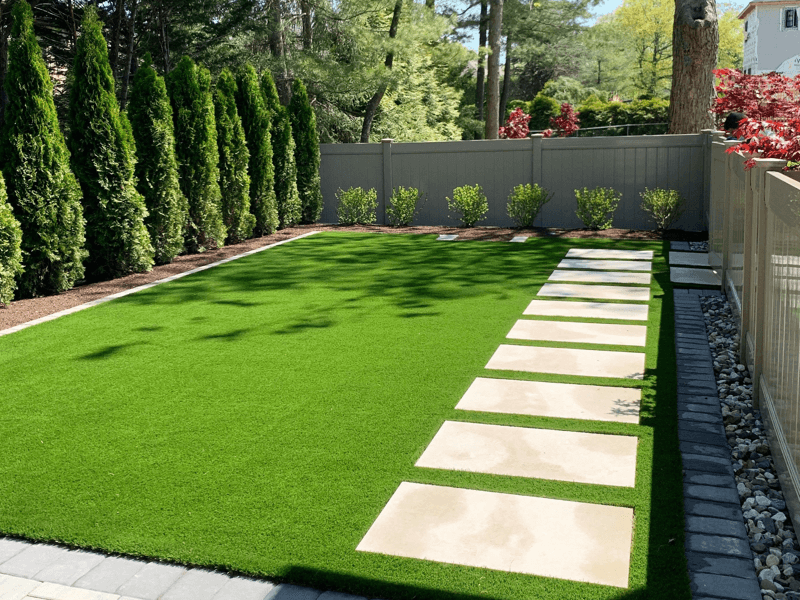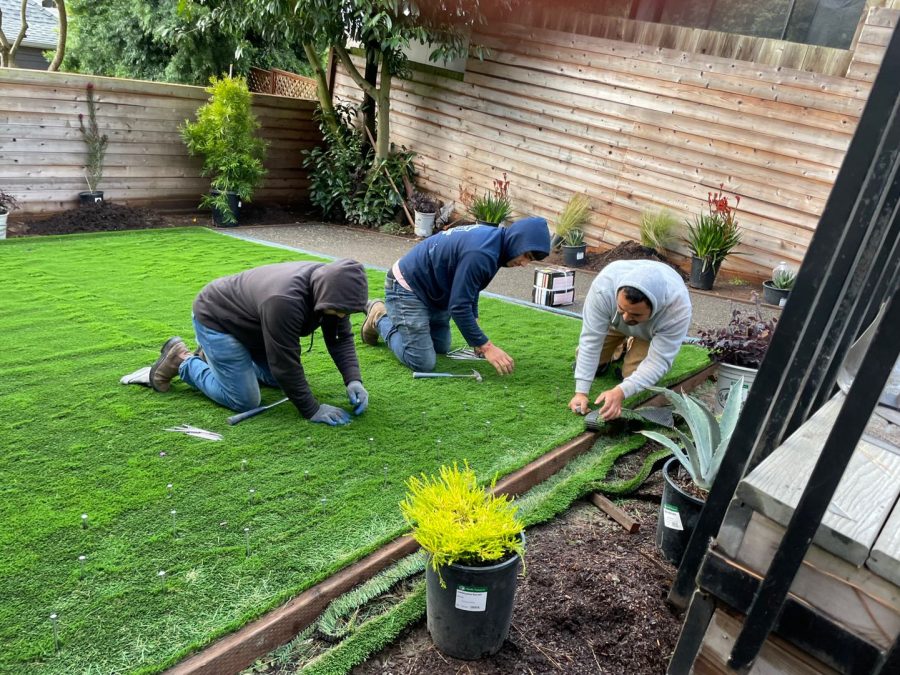Eco-Friendly Arizona Artificial Turf for a Always-Green Lush Green Lawn
Eco-Friendly Arizona Artificial Turf for a Always-Green Lush Green Lawn
Blog Article
Look Into the Environmental Conveniences of Opting for Artificial Lawn Solutions
The fostering of synthetic turf remedies provides an engaging chance to resolve pushing ecological obstacles. By dramatically reducing water usage and lessening the application of harmful chemicals, these choices not only advertise lasting landscaping however also secure neighborhood communities.
Water Preservation Perks
Among the most significant advantages of synthetic grass is its capability to preserve water. Conventional grass yards need significant watering, particularly in locations susceptible to drought or water restrictions. On the other hand, fabricated turf does not need watering, dramatically reducing the general demand for water sources. This function is particularly helpful in deserts where water shortage is a pushing worry.
By removing the need for routine watering, synthetic grass contributes to lasting landscape techniques and helps reduce the environmental influence of too much water intake. Moreover, the conservation of water includes the reduction of runoff, which can bring about soil disintegration and river air pollution.
Additionally, the installment of artificial turf enables municipalities and house owners to designate water sources much more successfully, concentrating on crucial usages such as alcohol consumption water and agriculture. The shift in the direction of artificial lawn not just promotes responsible water use however likewise straightens with wider ecological objectives intended at preserving natural deposits.
As communities increasingly prioritize sustainability, the water conservation advantages of synthetic grass offer a compelling situation for its adoption in residential and industrial landscaping tasks.
Reduced Chemical Usage
The shift to synthetic grass considerably decreases the reliance on chemical treatments generally used in natural yard upkeep. Traditional grass monitoring normally involves the application of chemicals, fertilizers, and herbicides to advertise development and control pests. These chemicals can pose threats to human health and wellness, regional wildlife, and the setting, adding to soil and water contamination.
In comparison, fabricated lawn removes the need for these damaging compounds. By decreasing the release of artificial substances right into the environment, synthetic grass promotes much healthier soil and water systems.
Furthermore, the lack of chemical overflow related to synthetic grass installations helps secure local waterways from contamination, supporting aquatic life and preserving biodiversity. Arizona turf. As communities increasingly focus on lasting techniques, selecting synthetic grass presents a viable solution that lines up with environmental conservation objectives. Through this shift, residential property proprietors can take pleasure in lush eco-friendly rooms without jeopardizing eco-friendly wellness, leading the way for a much more lasting future
Reduced Carbon Footprint

Moreover, the installment of synthetic grass can result in considerable water conservation. All-natural grass require significant quantities of water for visit the site watering, which not just contributes to the carbon impact associated with water extraction and therapy however also pressures neighborhood water resources. In contrast, synthetic lawn requires minimal maintenance, needing no watering, therefore dramatically lowering water usage and its linked power costs.
In addition, the durability of synthetic grass contributes to its lower carbon impact. With a life-span of approximately 15 years or more, the need for regular substitutes is reduced, resulting in much less waste and lower power usage in manufacturing and disposing of standard lawn alternatives. Generally, fabricated turf provides a lasting alternative for environmentally aware landscaping.
Habitat Conservation
Environment conservation is a crucial consideration in the dispute over landscaping choices, specifically when contrasting synthetic lawn to natural yard. Natural turf lawns often need comprehensive maintenance, consisting of making use of fertilizers, herbicides, and chemicals, which can negatively influence local communities. These chemicals can leach into the dirt and rivers, harming native flora and animals and interfering with regional habitats.
In contrast, synthetic grass presents a possibility to minimize the eco-friendly impact of landscape design. By going with artificial turf, property owners can lessen the interruption of natural habitats connected with typical grass treatment techniques. Synthetic grass gets rid of the need for dangerous chemicals, therefore securing neighboring wild animals and keeping the integrity of bordering environments. Additionally, the setup of synthetic my explanation grass can bring about the conversion of former grass areas into even more biodiverse landscapes, such as pollinator yards or native plant locations, which can support regional wild animals.
Eventually, the shift to synthetic grass not click here for more info only saves water and decreases maintenance efforts yet also cultivates a more unified connection in between human activities and the natural atmosphere, promoting habitat preservation while doing so.
Long-Term Sustainability
Long-lasting sustainability is a vital consider evaluating the benefits of fabricated turf over standard grass yards. Among the most considerable advantages of synthetic grass is its durability; it can last approximately 15-20 years with very little upkeep, whereas natural yard calls for constant reseeding and substitute. This long life reduces the need for constant sources, such as water, plant foods, and chemicals, which are important for maintaining a healthy and balanced turf lawn.
Additionally, synthetic grass adds to a reduction in carbon emissions related to lawn care tools. Conventional lawns frequently need gas-powered lawn mowers, leaners, and blowers, every one of which add to air contamination. Arizona turf. On the other hand, synthetic grass removes the demand for such equipment, advertising a cleaner atmosphere
Furthermore, the production of fabricated turf increasingly makes use of recycled products, improving its sustainability profile. As producers adopt environmentally friendly methods, the ecological footprint of synthetic grass remains to reduce.

Verdict
The adoption of artificial lawn remedies offers significant ecological advantages, including significant water preservation, lowered reliance on unsafe chemicals, and a lower carbon footprint. Moreover, fabricated turf aids in preserving natural habitats by minimizing land disruption and promoting lasting sustainability through using sturdy materials. Collectively, these variables highlight the capacity of synthetic grass to add favorably to ecological health and use a sensible choice to standard landscape design practices in a significantly resource-conscious world.
In comparison, artificial grass does not need watering, substantially reducing the overall need for water resources. By minimizing the launch of synthetic compounds into the ecosystem, fabricated lawn promotes healthier dirt and water systems.
Moreover, the installation of artificial turf can result in significant water conservation. In comparison, fabricated grass needs very little upkeep, calling for no watering, consequently significantly decreasing water use and its linked energy costs.

Report this page